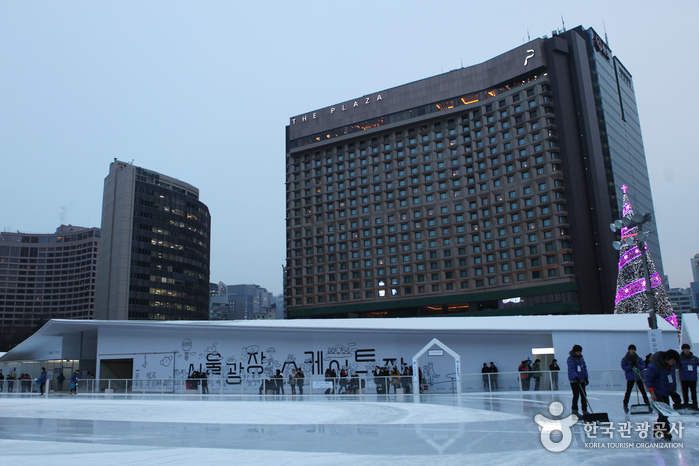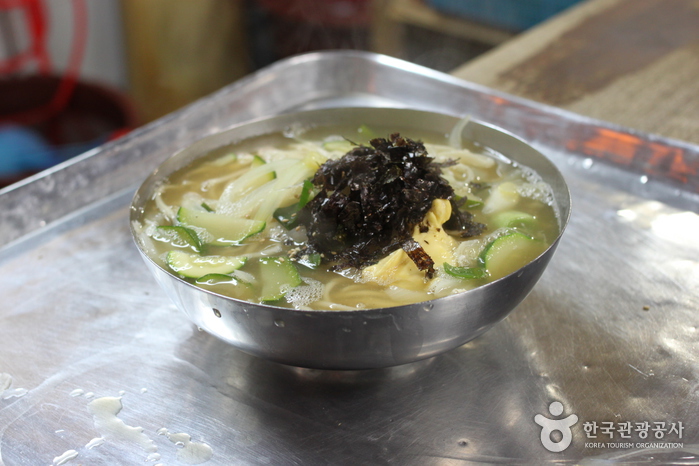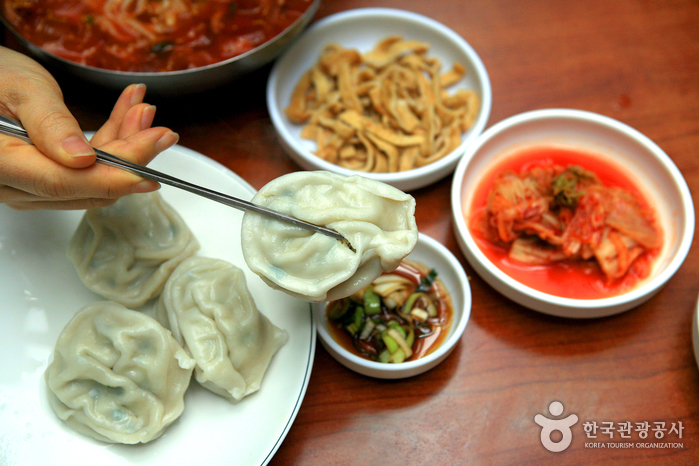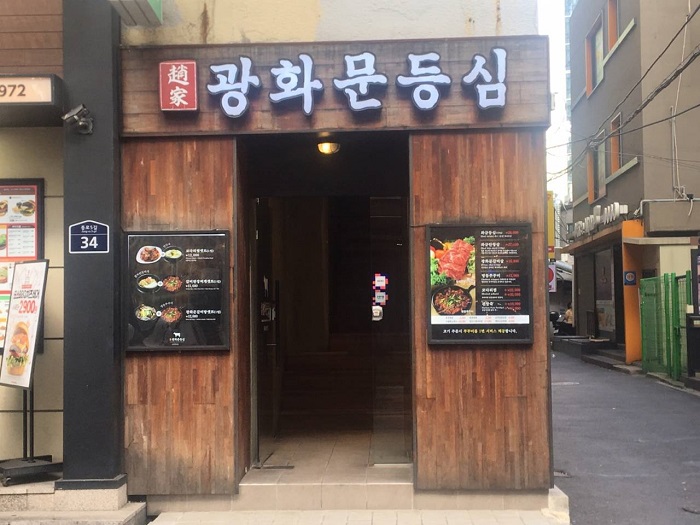Rakkojae Seoul Bukchon Hanok Hotel [Korea Qaulity] / 락고재 서울 북촌 한옥호텔 [한국관광 품질인증/Korea Quality]
10.7Km 2021-10-27
49-23, Gyedong-gil, Jongno-gu, Seoul
The main building in Seoul is a traditional Korean cultural space renovated by Jeong Yeong-jin, a human cultural asset, from a hanok with a history of 130 years. Traditional flags, fences, pavilions, chimneys, and jangdokdae are holding the blue sky with pine trees, creating a harmonious Korean-style house. Passing through the elegant tall gate, as you see the jangdokdae, a small but clean hanok will be revealed, and the pine trees and bamboo trees added to the natural beauty, while the loving Gomusin placed on the stone brings back beautiful memories.
Rakkojae is a place where the customs of the aristocrats in the past are melted in various places, creating a wonderful atmosphere by carefully reviving the pavilion, ponds, and daecheongmaru. Especially, Daecheongmaru adds the beauty of the margins of hanok to give you a sense of refreshment. As the old scholars did, sitting on the pavilion makes the time flow slow and the wind that passes over the Sotdae feels special.
In addition, you can experience the beauty of Korean tradition with various programs such as tea ceremony, jjimjilbang, royal robes, and kimchi-making along with traditional Korean food. Rakkojae's accommodation, reminiscent of a nobleman's house in the Joseon Dynasty, is well-kept and comfortable that it is comparable to a luxury hotel, and the natural jade-covered ondol rooms and firewood jjimjilbangs made of cheongito provide a healthy journey for many guests.
Pista de Patinaje de la Plaza de Seúl (서울광장 스케이트장)
10.7Km 2021-05-27
Sejong-daero 110, Jung-gu, Seúl
En invierno, la Plaza de Seúl, frente al Ayuntamiento de la ciudad, se convierte en un complejo de pistas de patinaje sobre hielo. Tiene tres pistas de distinto tamaño y una pista de trineo sobre hielo. Una de las grandes atracciones del lugar es que posibilita apreciar todo el paisaje completo de la plaza y presenta varios eventos y espectáculos culturales.
Plaza de Seúl (서울광장)
10.7Km 2022-12-14
Sejong-daero 110, Jung-gu, Seúl.
+82-2-735-8688
Fundado en 1926, el antiguo edificio del Ayuntamiento de Seúl es de piedra, de estilo renacentista. La plaza delante del Ayuntamiento es un sitio histórico donde se realizaron el Movimiento de Independencia de 1919 (Samil) y el movimiento de pro-democracia en junio de 1987. Es también un lugar conocido porque, durante la Copa Mundial de Fútbol de 2002, decenas de miles de admiradores del seleccionado nacional se congregaron para aclamarlo. Esta plaza de hierba oval delante del Ayuntamiento de Seúl, reestablecida en 2004, es usada como un lugar para sostener varios acontecimientos y festivales culturales, y es para el disfrute por muchos seulitas. Como atracción de la Plaza de Seúl está la fuente de agua del piso. Las 48 luces de piso a lo largo de la plaza de hierba y una especie de reloj externo de la pared son otros rasgos distintivos de la Plaza.
Hyundai Kalguksu (현대칼국수)
10.7Km 2020-06-16
76, Sejong-daero, Jung-gu, Seoul
+82-2-752-9504
Hyundai Kalguksu is a kalguksu (handmade knife-cut noodles) restaurant that has been in the family for two generations (1982). The restaurant is extremely popular among people working at nearby businesses, thanks to the rich flavor of the broth. Anchovies, dried pollack heads, and kelp are simmered for many hours, and then, other ingredients are added: soft noodles and various vegetables including pumpkin, onion, and green onions. The restaurant is famous for the exquisite taste of its kalguksu, as well as for its large servings. Just one bowl is enough to satisfy a starving man, but if you are still hungry, don’t hesitate to ask for more rice or noodles for free. Another unforgettable specialty here is kimchi. You will also be able to enjoy geotjeori (freshly made kimchi) and kkakdugi (sliced white-radish kimchi), which is fermented for about three days.
Biblioteca de Seúl (서울도서관)
10.7Km 2022-12-14
Sejong-daero 110, Jung-gu, Seúl.
+82-2-2133-0300
La Biblioteca de Seúl ofrece una amplia variedad de documentos, desde materiales relacionados con la historia, la cultura, el urbanismo, el transporte, el medio ambiente, todo tipos de documentos sobre viajes, hasta informes extranjeros, documentos de investigación, materiales visuales e información electrónica.
KPOP HOTEL SEOUL STATAION BRANCH
10.7Km 2021-04-09
16-17, Huam-ro 60-gil, Jung-gu, Seoul
+82-10-8774-5231
K-Pop Hotel is only a 2-minute walk from Exit 10 of Seoul Station on Subway Lines 1 & 4. It’s conveniently located near a number of tourist destinations, since it’s a mere 10-minute walk from Sungnyemun Gate and only a 15-minute walk from Namsan Park. Gyeongbokgung Palace is only a 10-minute ride away, with Insa-dong located a mere 12 minutes away from the hotel. The 24-hour front desk provides express check-in and check-out services as well as a safe deposit box. Featuring Standard Double Rooms, Twin Rooms, and Family Rooms, the hotel is a great place to stay for business travelers and tourists traveling with friend or family. All the rooms are furnished with air conditioner, cable/satellite TV channels, flat screen TV, free Wi-Fi connection, and hair dryer. There is a rooftop terrace and a cafe where breakfast is served. The cafe is also furnished with kitchen, desktop computer, and washing machine, which can be shared among the guests. If you want to park your car more conveniently and quickly, notify the front desk of your arrival in advance.
Tumba Real Jeongneung en Seúl (서울 정릉) [Patrimonio Cultural de la Humanidad de la Unesco]
10.7Km 2021-01-27
Arirang-ro 19-gil 116, Seongbuk-gu, Seúl.
+82-2-914-5133
La tumba Jeongneung es la tumba real de la reina Sindeogwanghu, que era la esposa de Taejo, el primer rey de la dinastía Joseon. En aquella época el rey, según las tradiciones del antiguo reino Goryeo, tenía dos esposas: una en Seúl, que llega a ser la reina Sindeogwanghu, y otra en su tierra natal. La Sra. Han, su esposa en su tierra natal, murió antes de que Taejo subiera al trono, por lo que fue la Sra. Kang quien tuvo el honor de ser coronada como reina.
Taejo tuvo dos hijos con la reina, pero aquellos príncipes murieron durante la revolución liderada por su hermanastro Lee Bang-won. Después de esta tragedia, Taejo perdió el interés por la política y dedicó la mayoría de su tiempo a orar por su esposa e hijos en los templos budistas situados en Jeongneung.
Libuk Sonmandu (리북손만두)
10.7Km 2019-08-28
17-13, Mugyo-ro, Jung-gu, Seoul
+82-2-776-7361
Libuk Sonmandu restaurant is located deep in the alleys behind Seoul City Hall in the Mugyo-dong area. It is famous for kimchimari bap and sonmandu (handmade dumplings). Kimchimaribap is rice in a soup of kimchi and ice cubes with various added flavorings that originated in North Korea. This is a refreshing dish for summer. Other items on the menu are bindaetteok (mung bean pancake) and mandu jeongol (dumpling hot pot).
Templo Jogyesa en Seúl (조계사(서울))
10.7Km 2024-05-17
Ujeongguk-ro 55, Jongno-gu, Seúl
El templo Jogyesa es el núcleo del budismo zen en Corea, en él se encuentran la oficina principal de administración del budismo coreano y la sala en donde se realiza la asamblea general, entre otras instalaciones. Fue construido hacia finales del siglo XIV (época de Goryeo) en el interior del actual parque Susong, pero fue destruido (en un período indeterminado) debido a un incendio, y fue reconstruido en el año 1910. A lo largo de su historia ha tomado varios nombres, hasta que recibió la denominación de Jogyesa en el año 1954. El nombre deriva del monte Jogyesan, el cual fue el lugar en donde meditó el monje Hyeneungdaesa. Fue uno de los monjes más respetados, por lo cual sus enseñanzas y su vida han sido objeto de estudio a lo largo de la historia. En el altar del templo Jogyesa, al ser el lugar más sagrado y honrado del budismo en Corea, se llevan a cabo eventos, ceremonias y ritos durante todo el año. El edificio próximo al altar principal es la oficina general de administración del budismo coreano, es decir, es un organismo que ejerce las actividades de control y ejecución, por lo que también se efectúan gran cantidad de eventos budistas. Dentro del edificio se establecen las salas de exposiciones y la imprenta, que edita e imprime semanarios budistas. En el patio principal del templo se sitúa la pagoda de piedra de 7 pisos, construida en el año 1930. En especial, dentro de la pagoda se encuentran enterradas las cenizas de Buda, que fueron traídas en el año 1914 por un monje esrilanqués. Hacia la izquierda se encuentra instalado el campanario, que posee un gran tambor, una campana e instrumentos tradicionales de madera que se utilizan en el templo. Al otro lado del campanario está el primer centro cultural académico, construido en el año 1991, en donde se realizan seminarios, actuaciones, ceremonias de boda, conciertos musicales y exposiciones, entre otros eventos culturales.
Gwanghwamun Deungsim (광화문등심)
10.7Km 2021-07-20
34, Jong-ro, 5-gil, Jongno-gu, Seoul
+82-2-722-2020
A restaurant that’s popular among workers for group dinners, it sells grilled meat. This Korean dishes restaurant is located in Jongno-gu, Seoul. The representative menu is grilled boneless ribs.
![Rakkojae Seoul Bukchon Hanok Hotel [Korea Qaulity] / 락고재 서울 북촌 한옥호텔 [한국관광 품질인증/Korea Quality]](http://tong.visitkorea.or.kr/cms/resource/40/2698240_image2_1.jpg)



![Tumba Real Jeongneung en Seúl (서울 정릉) [Patrimonio Cultural de la Humanidad de la Unesco]](http://tong.visitkorea.or.kr/cms/resource/91/2622291_image2_1.jpg)


 Español
Español
 한국어
한국어 English
English 日本語
日本語 中文(简体)
中文(简体) Deutsch
Deutsch Français
Français Русский
Русский